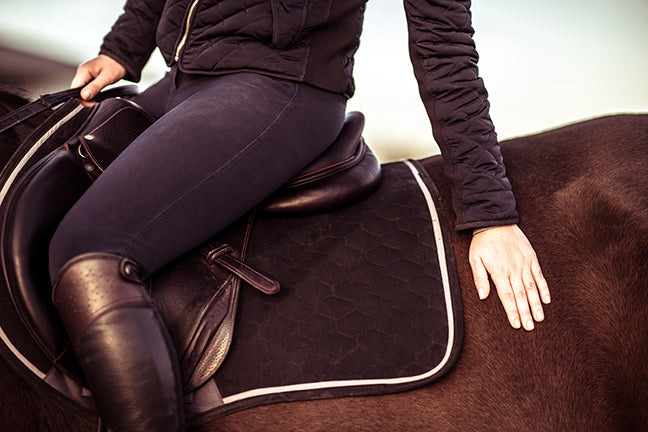... and One Reason to buy one, after all.
By Stefanie Reinhold
Adjustable saddles sound like the perfect solution for common challenges:
- Fitting an existing saddle to a new horse.
- Fitting a used saddle to an existing horse.
- Using one saddle for several horses.
- Buying a used saddle without worrying about fit.
But is it really that easy?
What does ‘adjustable saddle’ really mean?
In most cases, when a manufacturer describes their saddle as ‘adjustable’, they mean that the rider or horse owner can adjust the tree width by either
- manipulating an adjustable mechanism inside the gullet with the aid of a tool (example: DP Saddlery saddles) or
- by exchanging the gullet plate altogether (example: Pessoa saddles).
A few manufacturers offer even more adjustable parts... I will not post a link here because in my opinion and based on my experience as a professional saddle fitter, this is downright dangerous and can lead to (unintended) negative consequences such as pain, discomfort, and muscle atrophy and even lameness. [Contact me, if you have questions about this opinion.]
5 Reasons NOT to Buy an Adjustable Saddle
- Saddle fit is the sum of a number of different factors. Gullet plate width is just one of these factors. Changing the gullet width alone without the ability to change and consider other factors (such as flocking, tree shape, tree length) is simply not enough. Most adjustable saddles are not adjustable in all of the factors.
- Changing the gullet plate width (commonly called tree width) even by ½ of a cm can have a considerable impact on the fit. Freely adjustable saddles (such as the DP Saddlery type, for example) provide too much room for error if they are constantly adjusted back and forth.
- Material wear and tear and reliability is a big factor in those saddles that incorporate an adjustment mechanism. These mechanisms can wear out over time, making the adjustment less reliable.
- Material wear and tear in the (synthetic) leather components of a saddle with interchangeable gullet plates is a given. You cannot keep changing the gullet plate without wearing out the surrounding elements.
- The biggest reason yet: You cannot achieve the optimal fit as the changes are too focused on the gullet width alone. Many of these saddles have foam panels, which are unchangeable. Even if you did then just exchange the gullet plate when you purchase a new (similarly shaped) horse, you would not be able to make the needed adjustments to the rest of the saddle.

In other words: Adjustable saddles are there to meet a market need of providing a relatively inexpensive solution to a common problems: The saddle does not fit.
One Good Reason Why you DO want to buy a saddle with an adjustable gullet plate
A saddle with an adjustable gullet plate that is incorporated into the saddle tree and made of materials that can SAFELY be adjusted by a professional is a good idea, if you plan to use the saddle on a similarly shaped but slightly narrower or wider horse. Instead of having to invest in a new saddle, you can have a professional take a measurement and adjust the tree as needed.
This is not the cheapest nor the most flexible solution, however, it is the solution that will serve the horse best as you can incorporate all factors that make up good saddle fit.
In this case, keep the following in mind:
- The gullet plate must be of specialized materials that tolerate adjustment without losing integrity.
- The tree itself (wood or synthetic) must be especially designed to accommodate adjustments. Otherwise, the strain of the adjustment may lead to damages or it may even crack!
- The panels of such saddle must also be changeable and adjustable, meaning they must be wool-flocked and not made of foam! [Converting foam panels into wool-flocked panels is an absolute mistake. The cut and design of the panels must be designed to accommodate the respective fill material – EITHER wool OR foam.]
- When looking at adjusting an existing saddle for a new horse, take all other aspects of saddle fit into consideration – just as if you would ‘custom fit’ a saddle to the horse. These are:
- Balance
- Contact
- Tree shape
- Tree width
- Panel shape
- Saddle length
- Billet placement
- Gullet width
Combining all these factors like a gourmet recipe into the right fit is called "saddle fitting" ;-).
Are there truly adjustable saddles that do not hurt the horse?
Yes! If you’d like to read more about this topic see “Are Passier Saddles Adjustable?”
Contact me with your questions. I love to hear from you!

Stefanie Reinhold

